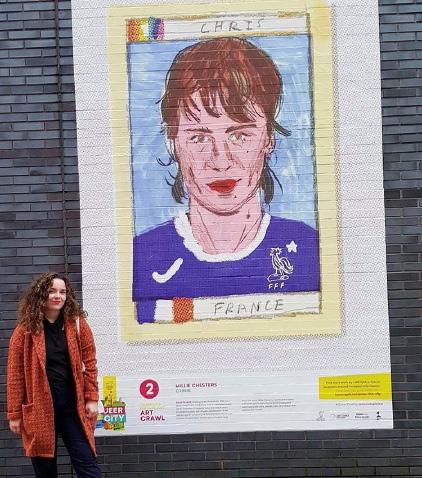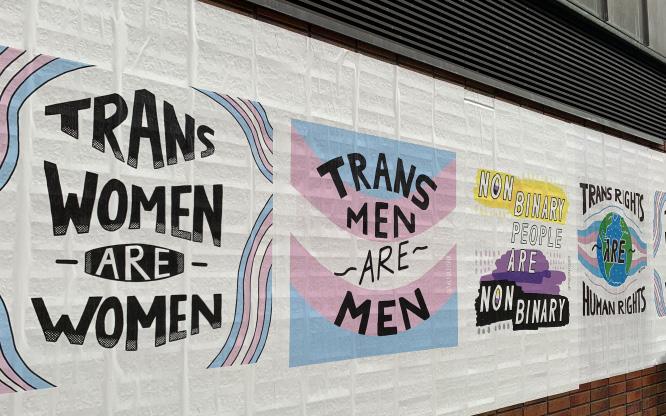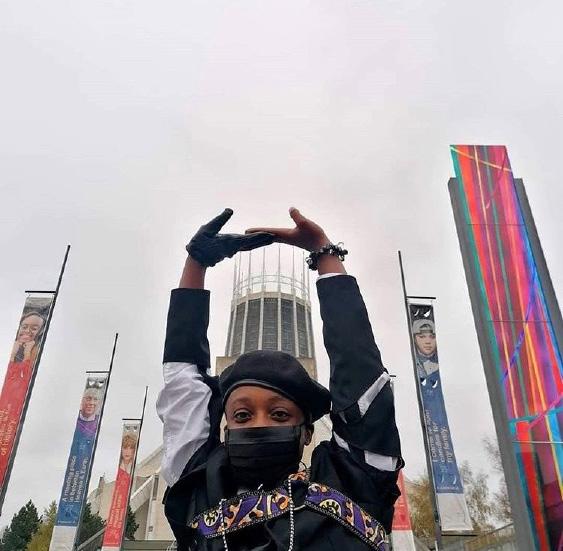
13 minute read
Will the elderly be lonely during the next
Helping the
elderly cope with Covid
Advertisement
Photo © Philippe Leone, Unsplash
By LAURA WOODING
Volunteers at a community hub in Aigburth are wondering how and when they will be able to continue to support local people, especially elderly residents, during the next lockdown.
Covid has affected the elderly in more ways than one, with over-70s having to isolate or expected to shield if suffering medical issues. This may leave the elderly feeling lonely, depressed or even scared.
In Aigburth, the Sudley Area Residents’ Association has had its Sara Hall doors closed since March 16, with all positive plans to reopen and re-engage being delayed until September, then October. Now, with further plans to postpone, it seems impossible for them to provide their services to the elderly any time soon.
Steven Kearney, chairman of the Association, said: “As the majority of our sessions are with older people who would be considered more vulnerable, either because of their age or pre-existing medical conditions, we found that people were more inclined to wait and see before committing to returning to the activities at the hall.”
The sessions and events bring social interaction into the lives of the elderly, but now with new community building regulations, it means tea or coffee facilities have had to be withdrawn as well as sitting in close contact or simply having a chat with a group of people.
Steven said: “Everyone would have to be spaced out, with nobody able to enjoy a hot drink. Windows and doors must be wide open for ventilation and with the run-up towards winter, none of this is a conducive way to spend a leisurely morning or afternoon.”
Some resources have now moved online. For example, St Anne’s Church in Aigburth is broadcasting all services and getting involved with podcasts and uploading videos on YouTube with various readings.
With this being a step beyond just closing the doors, attending church virtually may be a crucial part of the routine of some local residents but could still leave them physically isolated.
With another lockdown about to begin, the over-70’s could be left with the legacy of almost a full year of isolation. With people back at work and children back at school, the elderly could feel left behind.

Photo © Laura Wooding


Artists in the frame for ‘joyous’ painting prize
By MIA O’HARE
The long wait is finally over for the artists who have entered the John Moores Painting Prize 2020.
The UK’s oldest and most prestigious painting award sees entrants’ work displayed in an exhibition at the Walker Art Gallery, before a winner is announced next year.
From almost 3000 artworks, ranging from large scale canvases to bold colourful pieces and extremely detailed works of art, just 67 make up the show.
One thing that unites the artwork is their use of paint.
For more than 60 years the prize has followed the same principles, the art is judged anonymously. This year the jury is made up of Hurvin Anderson; Michelle Williams Gamaker; Alison Goldfrapp; Jennifer Higgie and Gu Wenda.
To reflect the move of Liverpool into Tier 3 of the government’s Covid restrictions, the judging was done online. High spec cameras, screens, speakers and AV software allowed judges to appreciate the scale, texture and detail of the works.
Sandra Penketh, Director of Art Galleries at National Museums Liverpool, said: “This exhibition is an extraordinary chapter in the John Moores Painting Prize’s long history. From the Call for Entries which launched just weeks before the first national lockdown, to the challenge of bringing together hundreds of paintings from across the UK, we’re delighted to have got to this stage and to finally have a truly exciting longlist.”
Reflecting on the judging process, juror Jennifer Higgie said: “It’s been such a joy to bear witness to the sheer amount of rich and varied paintings being made by so many talented artists in the UK today.
“It’s also been a privilege to work alongside my fellow jurors and the fine folk in Liverpool.”
Fellow juror, Michelle Williams Gamaker, said: “Judging the John Moores Painting Prize this year at a distance presented a new challenge in the prize’s history.
“Instead of standing with the artworks we zoomed right in, carefully scanning the surface of each painting. Ultimately our decisions were based on a number of themes that emerged and resonated with the other jurors in our collective discussions.”
The jury will select five paintings, and each will be awarded a cash prize. First place will receive £25,000 and the rest will be awarded £2,500. This year there will also be a £2,500 Emerging Artist Prize, supported by Winsor & Newton.
The names of the prizewinning artists will be announced in January 2021, with the first prize winner and the Emerging Artist Prize to be announced at the opening of the exhibition.

SIXTY SEVEN paintings have been longlisted for the exhibition


Theatres close their curtains once again
By STEPH COLDERICK
Liverpool loves its theatres” are the words that ring true across the city and two of Liverpool’s best-known theatres, The Everyman and The Playhouse were looking forward to finally re-opening their doors this month.
Devastatingly the new lockdown is putting a firm stop to these plans and leaving these theatres uncertain about when they can open their doors again.
After many plans and safety checks, just days ago The Everyman was preparing to let audiences in for the first time since March for showings of Homotopia and Friends Fabulous Cabaret on November 13 and 14.
Sarah Ogle, Marketing and Communications Director for The Everyman and The Playhouse, speaking before the lockdown announcement, said: “Quite a lot of consideration has to be given for how we do rehearsals, how we let the technicians work as well as thinking about the audience and their movement.”
From thinking about socially-distanced seating through to adapting to Tier Three restrictions, the theatres have been plunged into yet more uncertainty.
Ms Ogle explained: “There were hurdles because when we learnt about new tier three restrictions, we were not quite sure what that would mean, whether performances would still be able to go ahead.”
The Everyman was going to be turned into a cabaret theatre (after the showing of Homotopia and Friends Fabulous Cabaret) allowing them to sit 80 people in the venue that would normally hold 460. This, alongside A Christmas Carol, which is planned to be shown in the Playhouse, was scheduled to start in December but these plans are now in jeopardy.
In order to reach this tantalisingly close stage of opening The Everyman and Playhouse had taken advice from other institutions.
All photos © Steph Colderick

Ms Ogle said: “We have been lucky in that we have had a lot of venues that have already opened, so there is a number of collaborative conversations going on both locally across the cultural organisations and nationally.”
Audiences have stood by the theatres in this time of forced closure with many donating the money they paid for their tickets or extra money.
Ms Ogle explained: “It has been really heart-breaking to disappoint so many people. So many of them have generously donated their tickets to us.”
Calling the donations and support “a real vote of confidence for us and what we are doing.” it is clear these much-loved theatres remain in the hearts of people across the city. The theatres also went online during the first lockdown, launching schemes such as Love Liverpool and providing YEP (Young Everyman Playhouse) classes and activities virtually.
With money from the Cultural Recovery Fund the theatres have been able to prepare for the worst to happen.
Ms Ogle said: “That has meant we can protect the organisation should we have to cancel the shows and we can put safety measures in place.”
Since the lockdown announcement the Everyman and Playhouse have released this statement:
“After news on Saturday from Government about the closure of non-essential business and the requirement to work from home, we are awaiting clarification on whether we can still rehearse or stream productions. This will inform how we approach our plans for Christmas.”
With the sudden lockdown it brings the curtains to close yet again for these iconic theatres, who now must look hopefully again to the future.


View of the Everyman Theatre in Liverpool which is now facing closure again 15

Painting the town: queer culture takes to the streets
Liverpool celebrates the LGBTQIA community through showcasing local artists around the city during November. LAUREN HUGHES finds out more about the inclusive festival
The UK’s longest running LGBTQIA arts and culture festival is back with its “Queer the City: Art Crawl” event, featuring huge art installations by eight queer artists.
The art, which has seen the walls of Liverpool turned into an outdoor art exhibition, can be found in prominent locations all throughout the city, including Liverpool One, The Anglican Cathedral, The Baltic Triangle and more.
Char Binns, director of the Homotopia Festival, told Liverpool Life: “As the years have passed the festival has grown. It brings art and activism together, Homotopia is about social justice, understanding that art and culture are a way of communicating ideas.
“Queer the City goes much further, as a gorgeous display of queer culture

in spaces and places that everyone can see. The Queers are coming out of the basements and on to the streets and we’re creating emotive and challenging works of art as we go!”
The event, which is running for two weeks, features artwork by Fox Fisher, Colin Lievens, Kiara Mohamed, Soph Welton, Sophie Green, Michael Parry, OyH and Millie Chesters.
Cheshire-based illustrator Millie Chesters spoke exclusively to Liverpool Life about her art piece ‘Chris’ that combines both her love for football and music, putting a queer spin on football cards, celebrating one of her favourite musical artists ‘Christine and the Queens,’ also referred to as ‘Chris.’
“I can’t really link music and football directly, I just wanted to make something fun, in truth. I love the look of football cards - I thought it would be a great way to experiment
MARSHA: Sophie Green’s portrait features Marsha P. Johnson, one of the most prominent activists that started the Stonewall uprising, triggering the beginning of the gay liberation movement.
with portraits, colour and put my expectations from the public: illustrations into a new context. “First and foremost, Homotopia is
“I thought Chris would look really about showcasing amazing art, in all cool on a football card. Then the rest its forms, so I’m hoping that people followed, and it became a project enjoy the quality of the art we’re about queerness within football. exhibiting.
“When I applied for Homotopia “Beyond that, I hope that seeing festival, they were seeking to people this art will provoke curiosity and who are ‘unapologetically queer’ and raise questions. I think that sums up Homotopia, it “For queer people, I hope when allows people to be who they are and they see it, they will feel validated express themselves however they and welcome in Liverpool. And for want to. others I hope there may be learning
“Having a queer exhibition in the opportunities. middle of the city is great for inclu- “I’d like to think that some people sivity and also it could make some feel pleasantly surprised when engagpeople like they aren’t alone.” ing with something they may have
“Representation is massively felt was not for them or is out of their important! And it’s important to comfort zone.” question what proper representation The exhibition will be around until is. It’s great seeing queer art right in November 13, so join in with the art the centre of Liverpool. This is what crawl as queer art and culture take to Homotopia does! ‘Queer the City!” the streets.
Char had this to say about personal
“Homotopia is
of communicating ideas. “
CHRIS: artist and football fan Millie Chesters combines her love of music and football in this portrait of French singer Christine and the Queens © @milliechesters

TRANS RIGHTS BY FOX FISHER: A reproduction of a series of 4 screen-prints which include the phrases Trans Women Are Women, Trans Men Are Men, Non-Binary Is Non-Binary and Trans Rights Are Human Rights. © Lauren Hughes
It’s great seeing “ queer art right in the centre of Liverpool. This is what Homotopia does! ‘Queer the City!” “
© @Homotopiafest












